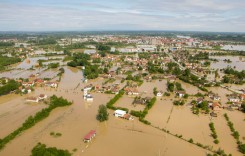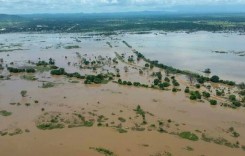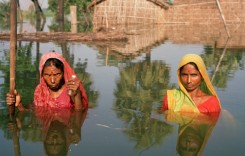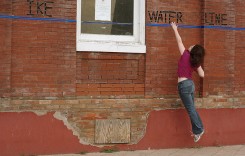Update, 18 April 2018
A total of 20 people have now died in recent flooding in Tanzania, with around 250 homes reportedly destroyed.
AFP are reporting that the death toll from the flooding in Dar es Salaam has increased to 14, according to local police.
“The balance sheet has worsened. This morning, we have reached 14 killed,” city police chief Lazaro Mambosasa told reporters.
Meanwhile severe flooding has affected other areas of the country, including Zanzibar and Arusha, according to local media. Flood-related deaths were reported in Tabora (3), Arusha (2) and Manyara (1).
Original report, 17 April 2018
At least 9 people have died in Dar es Salaam, Tanzania, as heavy rain caused buildings to collapse and widespread flooding in the city.
The rain has been falling since Saturday 14 April. Reuters reported television footage showing residents seeking shelter on rooftops. Authorities have ordered schools to be closed for two days starting on Tuesday to assess infrastructure damage.
Dar es Salaam recorded 81.8 mm of rain from 14 to 15 April, and 99.6 mm in 24 hours the following day. Other areas of the country have also seen heavy rain over the last week, including Zanzibar and Mtwara.
On 16 April Tanzania Meteorological Agency (TMA) warned of further heavy rain in Tanga, Dar es Salaam, Pwani, Morogoro, Lindi and Mtwara regions. Some areas are likely to see in excess of 50 mm of rain in 24 hours.
Residents were advised to continue take appropriate precautions and continue to obtain and adhere to weather information as well as warnings.
Dar es Salaam often sees flooding around this time of year. In March 2015, at least 5 people died after 91mm of rain – similar to recent levels – fell in 24 hours. In April 2014 as many as 10 people died after widespread flooding in the city.
Poor or blocked drainage systems, rapid urbanisation and unplanned housing settlements, often in flood plains and close to rivers, make Dar es Salaam particularly vulnerable. Almost 70 percent of the city’s inhabitants live in informal settlements, according to the Thomson Reuters Foundation. Efforts to clear illegal settlements have often left those evicted with nowhere to go.
In efforts to mitigate flooding, Dar es Salaam City Council has worked with the World Bank and other partners, including the Red Cross and the Open Geospatial Consortium, to map flood-risk areas. The project has involved plotting roads, streams and flood plains using drones.

Social Media
Ili kufahamu kuhusu nini kinaendelea juu ya hali ya hewa tembelea page zetu kwenye social media na website yetu https://t.co/K0zVP2RUDM pic.twitter.com/HFHfdoNgor
— Tanzania Met Agency (@tma_services) April 16, 2018
Reports by @TheGuardiantz & others indicate that so far nine people, including women & children, have lost their lives because of the ongoing rains.
Those living in areas where there is flooding should consider moving for the safety of themselves & their families.#Resilience pic.twitter.com/pJBgtkDAw4
— Alvaro Rodriguez (@ALVARO_UNTZ) April 17, 2018
Flooding continues to disrupt daily life in Dar es Salaam, #Tanzania. Video by Awad Musa pic.twitter.com/XLQzlgNRQH
— Mark T Jones (@MarkTJones500) April 16, 2018
@RamaniHuria @WBTanzania @TAHMO_World Heavy #rainfall recorded by #TAHMO stations in Dar es Salaam #Tanzania. Flooding around Jangwani, Kigogo and other vulnerable wards. pic.twitter.com/EqArXPNHZl
— Hessel Winsemius (@hcwinsemius) April 15, 2018








